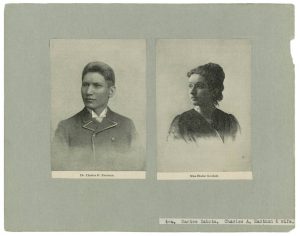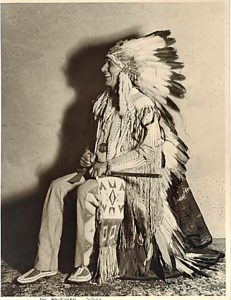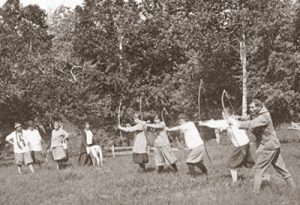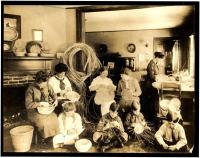Charles and Elaine Eastman opened Camp Oahe in NH in 1916. Both were involved with the early development of youth organizations including the Boy Scouts and Camp Fire Girls. Additionally, Charles served as an administrator for the YMCA and also guided the development of programming of the Woodcraft organization.


Photo, Smithsonian
Charles Eastman’s use of Red-facing was a method to subvert the settler centric narrative. The Eastman’s camp sought to bring awareness to the Native American culture and contradict the “vanishing Indian” and other colonial tropes. Camp Oahe was more about advocacy than strengthening hearty and healthy white girls. Charles and Elaine Eastman designed and governed the content to teach young white girls about native ways of women and motherhood so they would learn the worth of the Dakota culture.

Their programming also offered Dakota teachings in music, handcrafts, dance and sports. The Eastman’s goal was to change common perceptions about Native Americans and in the future, white girls would advocate on behalf of Native rights in society.
